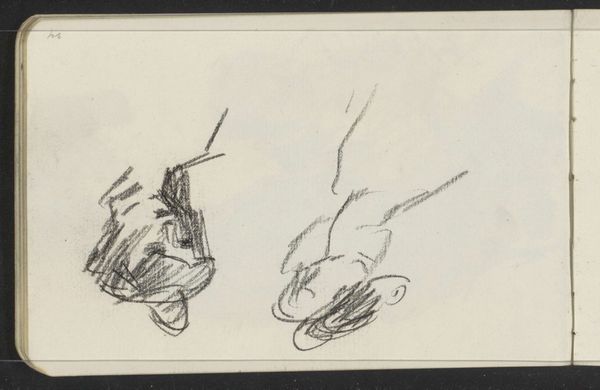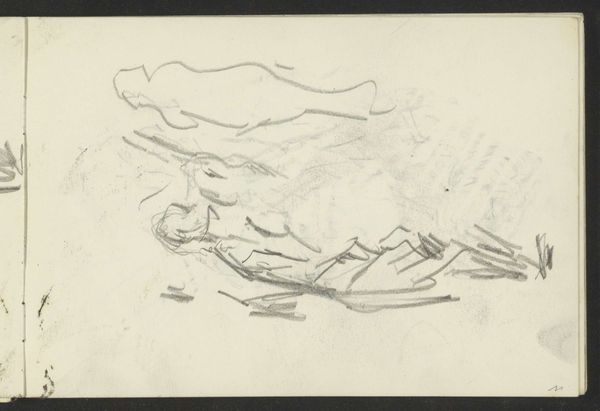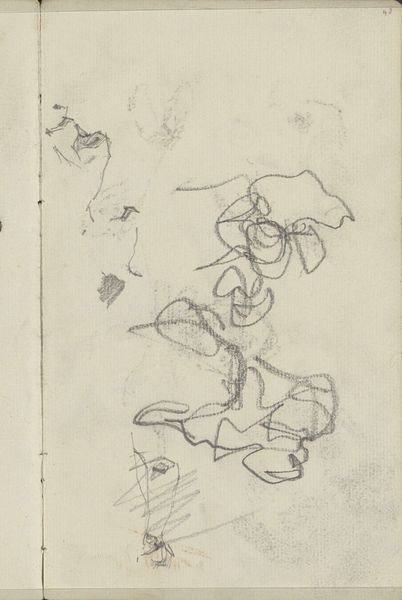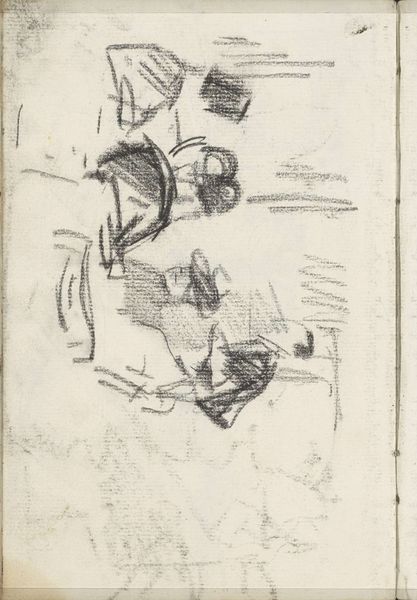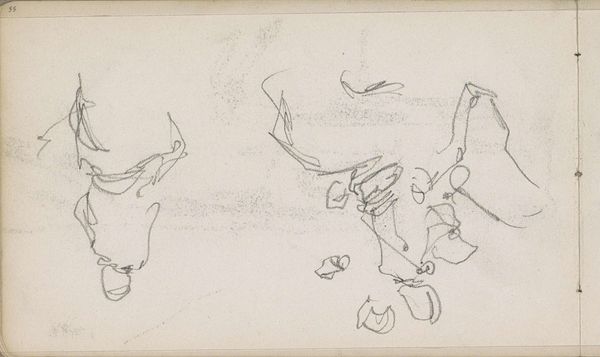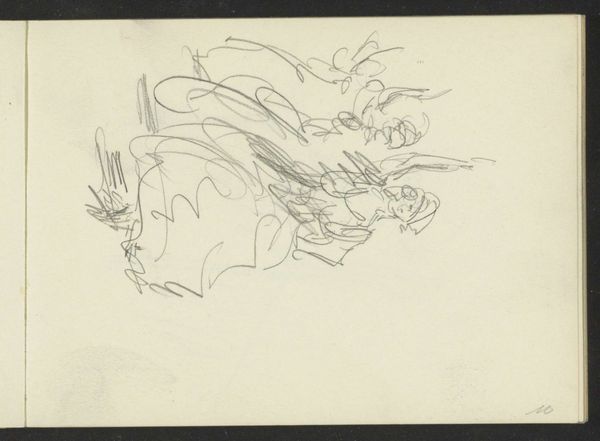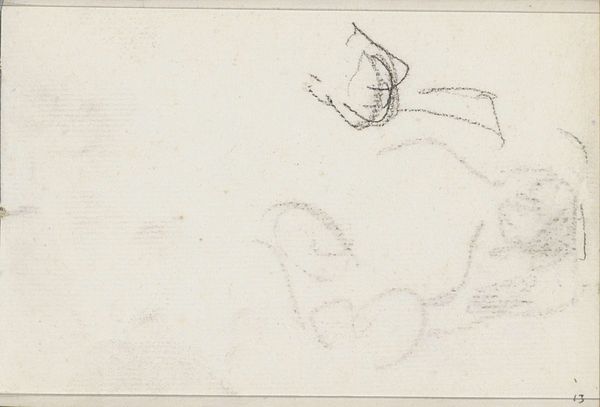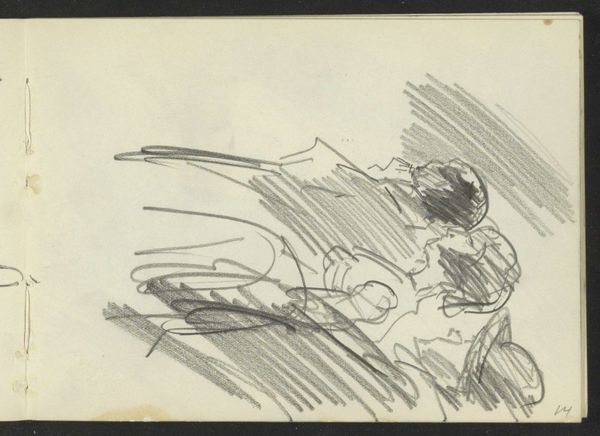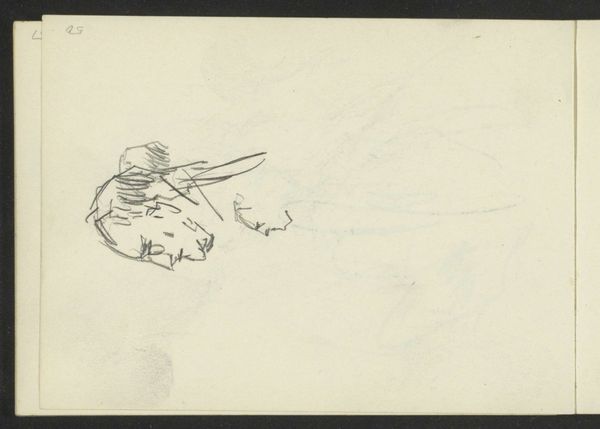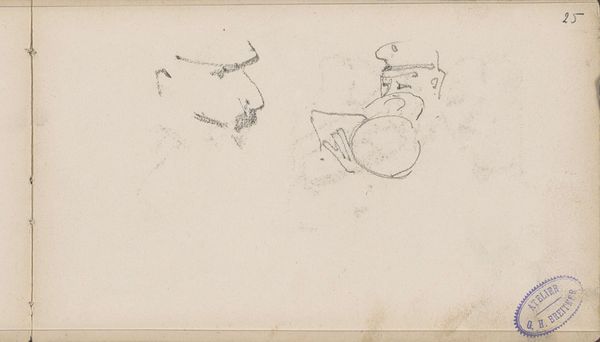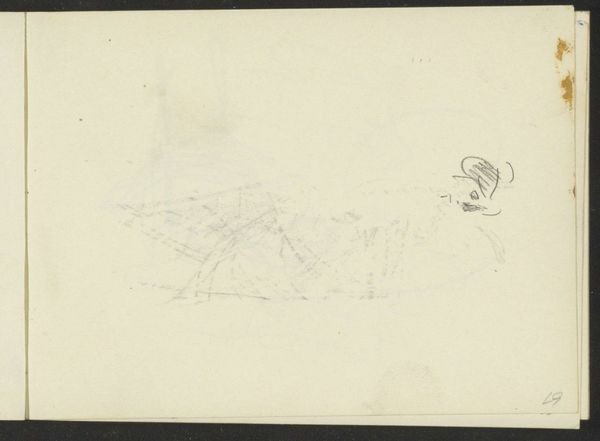
Copyright: Rijks Museum: Open Domain
Curator: Here at the Rijksmuseum, we have a work by Isaac Israels entitled "Vrouwenhoeden", or "Women's Hats," made sometime between 1886 and 1934, using pencil and pen. What’s your first take? Editor: It feels... fleeting. Like a snatched moment from a busy milliner's shop. I imagine the light glinting off the hat pins, the rustle of taffeta, a whirlwind of feminine frippery captured with the softest charcoal strokes. Curator: The work’s reliance on these quick, impressionistic sketches highlights Israels' interest in capturing everyday life. You get a sense of the rapid pace of modern life seeping into even leisurely pursuits like hat shopping. The use of easily portable and cheap materials like pencil and paper were key here, signaling an artist who's prioritizes immediacy of expression over traditional art. Editor: Yes, it almost feels like looking over the artist's shoulder while they're brainstorming ideas. Did they go on to execute a more polished version of one of these hat studies? I’m wondering which hat finally won his affection for painting! It gives you that intimate sneak peek into the artist’s thinking that's usually hidden. Curator: That's the thing, isn't it? These sketches are intriguing for their ability to be raw and imperfect. They act like little time capsules preserving the social rituals around fashion and female identity within consumer culture during the late 19th and early 20th century. Editor: Fashion, right! A whole story is held within a doodle! It's a light hearted, ephemeral dance around beauty and style; perhaps this reveals the beauty we often neglect while chasing polished surfaces. Like those fuzzy pencil strokes— soft. A reminder not to miss the blurry charm within the everyday chaos. Curator: I concur! The value lies not just in their aesthetic qualities, but also in their testament to the means of production that facilitated Israels’ study. Editor: Definitely. And as we are appreciating Israels for making us witnesses, it also brings awareness to what our eyes choose to acknowledge or ignore. Curator: Precisely. It provokes us to really consider what is and what should be the object of beauty. Editor: Nicely said. A quiet provocation on paper!
Comments
No comments
Be the first to comment and join the conversation on the ultimate creative platform.
